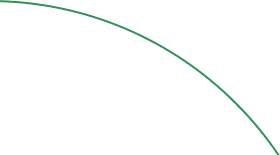Definition
The Mode is the value or values that occur most frequently in a dataset. Unlike the mean or median, the mode focuses on frequency rather than position or magnitude. A dataset may have one mode (unimodal), more than one mode (bimodal or multimodal), or no mode at all.
Mode is the measure of central tendency that represents the "most frequent" or "most popular"
value in a dataset. It identifies the value that appears most often, making it the only measure of central
tendency that can be used with all types of data including categorical, and the most intuitive for understanding "typical" cases.
🎯 What does this mean?
The mode is the "popularity champion" of your dataset - it tells you what value wins the frequency contest.
Think of it as the answer to "What's the most common?" or "What happens most often?" Unlike mean and median,
mode doesn't require mathematical calculations, just counting. It's like finding the most popular ice cream
flavor, the most common shoe size, or the typical response in a survey - it represents what's "normal" in terms of occurrence.
\[ \text{Mo} \]
Mode Symbol - Most frequently occurring value
\[ f(x_i) \]
Frequency Function - Count of occurrences of xi
\[ x_i \]
Data Value - Individual observation or category
\[ L \]
Lower Boundary - Start of modal class interval
\[ f_1 \]
Modal Frequency - Highest frequency in modal class
\[ f_0 \]
Pre-Modal Frequency - Frequency of class before modal class
\[ f_2 \]
Post-Modal Frequency - Frequency of class after modal class
\[ h \]
Class Width - Size of grouped data interval
\[ \max\{f\} \]
Maximum Frequency - Highest count among all values
\[ P(X = x) \]
Probability Mass - Likelihood of discrete value x
\[ f(x) \]
Density Function - Continuous probability density
\[ \frac{d}{dx}f(x) \]
First Derivative - Rate of change of density function
🎯 Essential Insight: The mode is the "people's choice" - it represents what actually happens most often
in real life, making it the most intuitive and practical measure of what's typical! 🎯
🚀 Real-World Applications
🛍️ Retail & Inventory Management
Product Demand & Stock Planning
Most popular product sizes, colors, models help retailers optimize inventory, plan production, and manage shelf space efficiently
🎯 Market Research & Consumer Behavior
Preference Analysis & Trend Identification
Most common brand preferences, purchasing patterns, demographic characteristics reveal market trends and consumer behavior insights
🏥 Healthcare & Epidemiology
Symptom Patterns & Treatment Planning
Most frequent symptoms, common treatment responses, typical recovery patterns help medical professionals plan care and allocate resources
🎓 Education & Learning Analytics
Performance Analysis & Curriculum Design
Most common test scores, frequent error patterns, typical learning pathways guide educational strategies and resource allocation
The Magic: Retail: Popular sizes → Smart inventory, Research: Common preferences → Market insights,
Healthcare: Frequent symptoms → Better diagnosis, Education: Typical performance → Targeted teaching
Before finding modes, think about what "most popular" means in your context:
Key Insight: The mode is the value that "wins the popularity contest" - it appears more often than
any other value. It's the only measure that must be an actual data point and works with any type of data!
💡 Why this matters:
🔋 Real-World Power:
- Business Decisions: Most popular products guide inventory and production
- Quality Control: Most common defects identify key improvement areas
- Resource Planning: Typical demand patterns optimize allocation
- Categorical Analysis: Only central tendency measure for nominal data
🧠 Mathematical Insight:
- Represents actual data values, not calculated averages
- Can have multiple modes or no mode at all
- Resistant to outliers (extreme values don't affect frequency)
🚀 Practice Strategy:
1
Count and Compare 📊
- Create frequency table for all unique values
- Count occurrences systematically
- Key insight: Mode = value with highest count
2
Identify Distribution Type 🎯
- Unimodal: One clear winner (single peak)
- Bimodal: Two values tied for highest frequency
- No mode: All values appear equally often
3
Handle Grouped Data 📈
- Find modal class (highest frequency interval)
- Use interpolation formula for precise mode
- Consider class boundaries and neighboring frequencies
4
Interpret in Context 🔍
- Mode represents "typical occurrence" not average
- Compare with mean/median for distribution shape
- Consider practical meaning of most frequent value
When you see the mode as the "popularity champion" that represents what actually happens most often,
statistics becomes a tool for understanding real-world patterns and common occurrences!
Memory Trick: "Mode = Most Often Does Exist" - COUNT: Frequency of each value,
COMPARE: Find highest frequency, CROWN: Value with most occurrences wins
🔑 Key Properties of Mode
🏆
Actual Data Value
Mode must be a value that actually appears in dataset
Not calculated but observed from data
🔢
Non-Unique Existence
Can have no mode, one mode, or multiple modes
Depends on frequency distribution pattern
🎨
Universal Data Type
Works with nominal, ordinal, and numeric data
Only central tendency for categorical data
📊
Visual Peak Indicator
Corresponds to highest bar in histogram
Easily identified graphically
Universal Insight: The mode is the mathematical embodiment of "what's normal" -
it shows what typically happens rather than what should happen on average! 🎯
Frequency First: Always count occurrences before determining mode
Real Values Only: Mode must be an actual data point, not calculated
Category Friendly: Only central tendency that works with nominal data
Multiple Winners: Can have more than one mode or no mode at all



